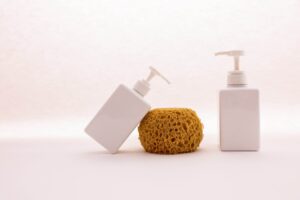The Shampoo Dilemma

We all want our hair to look clean, fresh, and vibrant. However, it’s essential to strike the right balance in our hair care routine. While shampooing is a crucial part of maintaining healthy locks, overdoing it can lead to undesirable consequences. In this beauty blog, we’ll explore the subtle signs that may indicate you’re over-shampooing your hair and provide solutions to help your hair regain its natural luster and health.
Before delving into the telltale signs of over-shampooing, it’s crucial to understand the significance of maintaining a proper hair care routine. Shampoo is designed to remove excess oil, dirt, and product buildup from your scalp and hair, leaving you with a clean canvas for styling. However, using too much or shampooing too frequently can lead to problems, such as dryness, frizz, and damage.
Signs of Over-Shampooing
- Brittle and Dry Ends: If your hair ends feel brittle and excessively dry, it could be a sign of over-shampooing. The natural oils produced by your scalp don’t often reach the tips of your hair, so over-shampooing can strip your hair of the little moisture it has, leaving the ends parched and prone to split ends.
- Excessive Oil Production: Paradoxically, over-shampooing can lead to your scalp producing more oil to compensate for the frequent removal of natural oils. This can result in a vicious cycle where you feel the need to shampoo more often to combat the greasiness.
- Itchy or Flaky Scalp: An itchy or flaky scalp can be a sign of an imbalanced hair care routine. Overusing shampoo can strip the scalp of its natural protective oils, leading to dryness and potential irritation.
- Lack of Natural Shine: Healthy hair boasts a natural shine, but over-shampooing can dull this luster. It strips away the protective oils that give your hair its glossy appearance.
- Excessive Frizz: Over-shampooed hair can become frizzy and difficult to manage. The lack of moisture and the roughened cuticles make your hair more susceptible to frizz.
- Color Fading: If you have color-treated hair, over-shampooing can lead to the premature fading of your hair color. The harsh detergents in shampoos can strip away the color molecules, leaving your hair looking less vibrant.
Understanding the Role of Hair Type
It’s important to recognize that not all hair types are the same. Straight, curly, fine, and coarse hair all have different needs when it comes to shampooing. Understanding your hair type and its specific requirements is crucial to finding the right shampooing frequency.
- Straight Hair: Straight hair often produces more oil than other hair types, so it may need more frequent shampooing. However, over-shampooing can still be a problem. Aim for every other day or every third day to maintain a balance.
- Curly Hair: Curly hair tends to be drier and benefits from less frequent shampooing. Try to limit shampooing to once a week or as needed, and focus on moisturizing and conditioning your curls.
- Fine Hair: Fine hair can become limp and weighed down with excessive oil. To maintain volume and cleanliness, aim to shampoo every other day or every third day.
- Coarse Hair: Coarse hair can withstand longer periods between shampoos. Shampooing once a week or even less frequently may be appropriate.
Solutions for Over-Shampooed Hair
If you’ve identified the signs of over-shampooing in your hair care routine, don’t fret. There are solutions to help you maintain clean, healthy hair without excessive shampooing.
- Transition Gradually: If you’re shampooing daily and want to reduce the frequency, transition gradually. Start by skipping a day between washes and see how your hair responds. Adjust as needed.
- Co-Washing: Co-washing, short for “conditioner-only washing,” involves using conditioner to cleanse your hair. It helps maintain moisture while removing some buildup. Look for conditioners designed for co-washing.
- Choose the Right Products: Opt for sulfate-free shampoos and conditioners. Sulfates can be harsh and contribute to over-drying your hair. Look for products with natural and nourishing ingredients.
- Dry Shampoo: Dry shampoo is a fantastic tool to extend the time between washes. It absorbs excess oil, adds volume, and leaves your hair feeling refreshed.
- Protective Styling: Using protective hairstyles, like braids or buns, can help reduce the need for frequent shampooing.
- Hair Masks: Regularly apply hydrating hair masks to restore moisture and repair damage caused by over-shampooing.
- Regular Trims: If your hair ends have suffered from over-shampooing, regular trims can help maintain a healthy appearance and prevent split ends.

Maintaining a Balanced Hair Care Routine
A balanced hair care routine is key to achieving healthy, beautiful hair. It’s essential to understand your hair type, its unique needs, and the signs of over-shampooing. By finding the right shampooing frequency and incorporating alternative cleansing methods, you can maintain a clean and vibrant mane without the drawbacks of excessive shampooing.
The shampoo dilemma is a common challenge for many of us seeking the perfect balance between clean, healthy hair and overdoing it. By recognizing the signs of over-shampooing, understanding your hair type, and implementing alternative cleansing methods, you can achieve vibrant, beautiful hair without the consequences of excessive shampooing. Your hair will thank you for finding the perfect balance in your hair care routine.

